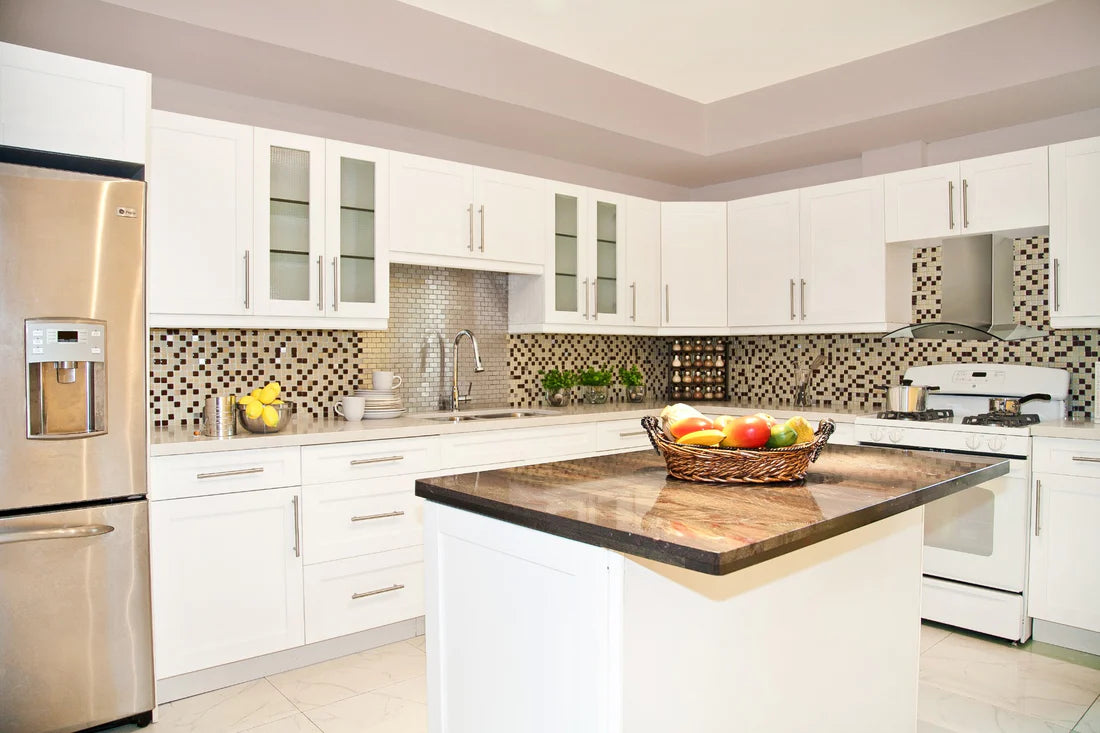Framed vs. Frameless Cabinets
Cabinets are an essential part of a kitchen's design, adding aesthetic appeal as well as functionality. When choosing the right cabinetry to enhance your space, one of the main choices you will be faced with is framed vs. frameless cabinets. Learn the pros and cons of each to determine which type of cabinetry suits your needs.
What Are Frameless Cabinets?
Frameless cabinetry has been common in Europe for some time, but it is now becoming increasingly popular in American households as well. As the name suggests, the structure of these cabinets does not involve a face frame. The doors and drawers are fastened directly across the edges of the box and the hinges are anchored to the side walls of the cabinets.
What Are Framed Cabinets?
Framed cabinets have a traditional American-style construction. These cabinets feature a face frame attached to the front of the cabinet box. This frame comprises horizontal rails and vertical stiles that provide a little more support for the cabinet box and give the door front added dimension.
Pros and Cons of Frameless Cabinets
Frameless cabinets offer many advantages because of their construction and design, but they do also have some drawbacks. Consider these pros and cons of frameless cabinets:
Pros
Frameless cabinetry is becoming a popular cabinet choice worldwide because it provides these advantages:
- Easier to clean and maintain: Frameless cabinets can save you time by making it easy to clean and maintain them. They have no railings on the front, making it possible to wipe down the corners and hard-to-reach spots with ease. Most frameless cabinetry features a quick-release button on the hinge, making it easy to remove the doors for cleaning.
- More usable storage space: Since frameless kitchen cabinets do not have stiles or a face frame, they provide more interior space. They are sometimes referred to as full-access cabinets because they make it easier to store larger dishes and other kitchen appliances. This design is an excellent option for maximizing kitchen storage space.
- Contemporary appearance: With a frameless design, the doors cover the entire cabinet box and the hinges are not visible. The resulting appearance is a sleek, modern look that complements various styles.
- European design: This Euro-style design is favored for its appearance and functionality, appealing to American homeowners searching for something that sets their kitchen aesthetic apart.
Cons
While frameless cabinets provide many benefits, they also have a few shortcomings:
- Requires full overlays: Frameless cabinets always need a full overlay due to the lack of a face frame on the box. The full overlay covers the entire box, which means that semi-overlay or inset doors are not an option with this design.
- Requires hinge adjustment: Because the hinges are mounted on the sides of the cabinets rather than being attached to the front, they require some expertise to achieve a straight and symmetrical look
Pros and Cons of Framed Cabinets
Framed cabinets represent an older, more traditional way of making cabinetry, and they're the standard in most homes across the United States. However, they still have their benefits and drawbacks:
Pros
Here are a few reasons why homeowners still choose framed cabinets:
- Traditional American design: The construction of framed cabinets follows the classic American way of making cabinetry. The design is what you would see in a typical kitchen, so it feels homey and familiar.
- Overlay options: The framing of these types of cabinets offers the ability to use various overlay options, including partial overlay, in-set and full overlay.
Cons
Framed cabinetry has the following disadvantages:
- Small lip: The frame forms a small lip that goes around the opening of the wall cabinet and the base. The lip can be an obstacle since it makes it challenging to take out plates and other kitchen items, particularly in cabinets that are more difficult to reach.
- Decreased storage space: The frame takes up space that would otherwise be part of the box, leaving drawers and rollouts with less usable area compared to frameless options.
- No flush finish: Where flush exteriors are standard for frameless cabinets, some framed cabinets may have visible seams where the sides meet the face frame, making the installation look a little less sleek.
- Difficult to customize after installation: Once framed cabinets have been installed, customization becomes challenging. If you want to add drawers or make other modifications later, it will be a difficult task. Also, building into the cabinets can be costly.
- Thinner materials: Since framed cabinets have a face frame that yields stability for the box, cabinet makers often use thinner materials for the rest of the construction. The cabinet as a whole may be less sturdy as a result.
Turn to PKB Cabinetry for the Perfect Solution
Each type of cabinetry has its pros and cons, but if you're eager to explore the enhanced storage space and modern visual appeal of frameless kitchen cabinets, our ready-to-assemble (RTA) frameless designs provide some of the best options on the market today.
Frameless cabinets offer many upgrades to the traditional framed design, from ease of access to simplified cleaning, and they bring a sleek, contemporary look to any space. To learn more about our products, find a PKB dealer near you. If you're interested in joining us in making RTA frameless cabinets more broadly available, you also have the option of becoming a dealer or a franchise with our assistance.





